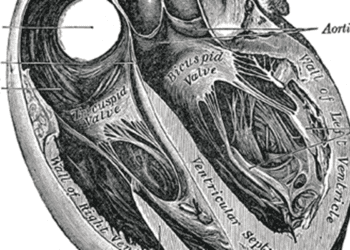Emergency room readmissions not associated with increased cost, mortality
1. Patients initially discharged from the emergency department who were then readmitted during a return visit had lower rates of in-hospital mortality, ICU admissions, and in-hospital costs, compared to patients hospitalized during their initial emergency department visit and later readmitted.
2. Patients who were hospitalized during their initial emergency department visit, and later readmitted experienced greater lengths of stay at the hospital as well as greater in-patient care costs.
Evidence Rating Level: 2 (Good)
Study Rundown: For policy makers and stakeholders alike, improving the quality and patient experience of healthcare while reducing hospital costs remains a priority. Unscheduled return visits to the emergency department can reflect inadequate discharge practices or follow-up procedures. Thus, the authors of this study investigated whether short-term, unscheduled return visits to the emergency department affected the outcomes of patients and hospital cost allocation. Using generalized linear models, this study found reduced ICU admissions rates, in-hospital mortality, and costs for patients who were initially discharged from the ED and then readmitted during a return visit, compared to patients who were admitted in the initial visit and did not have a return visit. Furthermore, patients who were admitted at the initial ED visit and were re-admitted during an unscheduled return visit experienced greater lengths of hospital stay and incurred higher in-patient costs than admitted patients who did not have return visits.
In contrast to previous studies on this topic, this analysis investigated outcomes of patients after hospitalization. However, its results are limited by the fact that it utilized secondary data, restricting the outcomes that could be studied. Additionally, the mortality of patients who died outside the hospital could not be tracked. Overall, as those patients readmitted after an initial ED visit fared relatively well, this study suggests that this type of return visit to the hospital may not be indicative of deficits in healthcare quality.
Click to read the study in JAMA
Relevant Reading: Estimating inpatient hospital prices from state administrative data and hospital financial reports
In-Depth [retrospective cohort]: After exclusion criteria were applied, a total of 9,036,483 patients with index ED visits were included in this study. Of these patients, some were admitted during the index visit, discharged, and then later readmitted in a subsequent ED visit (Hospital readmission group, N=388,959); others were discharged during the initial visit, and were later hospitalized during a subsequent ED visit (ED return admission group, N=380,878). The study aimed to characterize the separate outcomes of these two particular groups. The main outcomes measured included in-hospital mortality, ICU admission, length of stay, and total inpatient costs. The ED return admission group was found to have a significantly lower risk of mortality (1.85%) compared with the Hospital readmission group (2.48%) (OR=0.73 [95% CI, 0.69-0.78]) and also had a lower rate of ICU admission (23.3% vs. 29.0% respectively, OR=0.73 [95% CI, 0.71-0.76]). Additionally, the Hospital readmission group had a longer average length of stay (5.70 days) compared to the ED return admission group (4.97 days) (IRR, 1.15 [CI, 1.14-1.16]) and had greater mean inpatient costs ($11,051 vs. $10,799, respectively; difference, $252 [95% CI, $63-442]).
Image: PD
©2016 2 Minute Medicine, Inc. All rights reserved. No works may be reproduced without expressed written consent from 2 Minute Medicine, Inc. Inquire about licensing here. No article should be construed as medical advice and is not intended as such by the authors or by 2 Minute Medicine, Inc.







